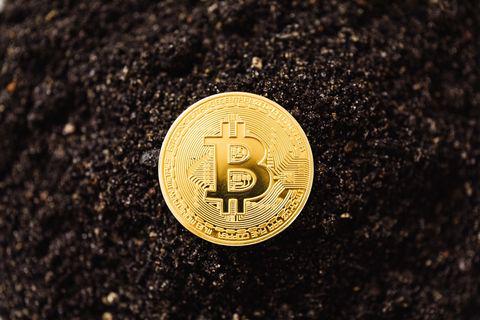
Bank of Indonesia Governor Perry Warjiyo announced that Jakarta is following the lead of the BRICS bloc to reduce dependence on the USD and diversify the use of currency in international trade. Indonesia is "more concrete" than the BRICS...
For a seamless experience, click “Redirect me.”

Don’t waste your time – keep track of how NFP affects the US dollar!
Data Collection Notice
We maintain a record of your data to run this website. By clicking the button, you agree to our Privacy Policy.

Beginner Forex Book
Your ultimate guide through the world of trading.
Check Your Inbox!
In our email, you will find the Forex 101 book. Just tap the button to get it!
Risk warning: ᏟᖴᎠs are complex instruments and come with a high risk of losing money rapidly due to leverage.
71.43% of retail investor accounts lose money when trading ᏟᖴᎠs with this provider.
You should consider whether you understand how ᏟᖴᎠs work and whether you can afford to take the high risk of losing your money.
Information is not investment advice
The crypto market had a rough start of the year, declining by more than 20% due to the hawkish Federal reserve statements. As a result, the crypto market's capitalization lost 45% and fell to $1.64 trillion, the lowest since August 2021.
Altcoins are falling increasingly faster than the first cryptocurrency, causing an increase in the share of BTC, which is already 42.3% against 39.3% lows in mid-January. Bitcoin's 40% share looks like a turning point that triggered a correction in the crypto market twice before.
It is well-known the crypto market has a strong positive correlation with the US stock market. This fact should reduce optimism among crypto investors as of the end of trading Tuesday, January 25, 2022, is now, officially, the worst-ever start in the history of the S&P 500.
Some traders hold a belief, called the January barometer, the investment performance of the S&P 500 in January can predict its performance for the rest of the year. If this belief turns out to be true, the crypto market will face a rough year.
The first reason is macroeconomic news from the USA. According to the Fed's January meeting, the US regulator can raise interest rates faster and earlier. The market is pricing five rate hikes up to 1.5%. Technology companies will remain under pressure with this market trend, dragging the cryptocurrency market into a deeper correction.
The instability of the situation with the cryptocurrencies regulation in Russia also pressures the market. The Russian Central Bank announced that trading and mining cryptocurrencies would be prohibited. Fortunately, later, President Vladimir Putin joined the discussion and offered to regulate cryptocurrencies operations instead of blocking them.
Russia is the third country in the world by mining hash rate. Therefore, the crypto market is highly dependent on the final decision of the Russian government.
BTC/USD, weekly chart
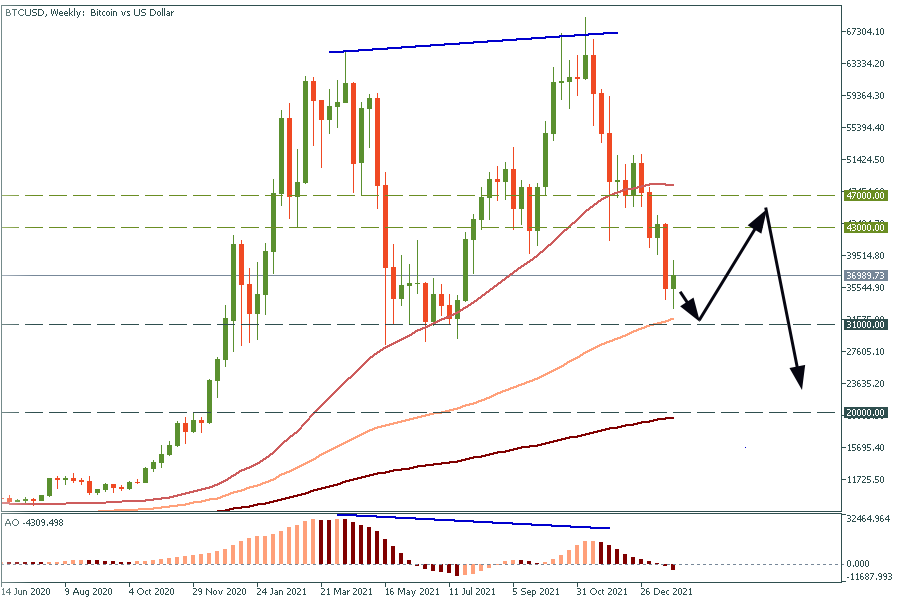
The bearish divergence appeared on the weekly Bitcoin chart. At the moment, the price is trading above the key support level of $30 000. However, we expect Bitcoin not to break this support through right away. Instead, it will rise to $43 000 - $47 000, form a bull trap, and crush down to $20 000 as the Federal Reserve increases the interest rate.
ETH/USD, monthly chart

Ethereum will follow "the big brother" and decline down to $1900 first with a solid bounce up to $2800 after. Then, when the price finishes the head-with-shoulders pattern, it will decline to $1100.
BNB/USD, weekly chart
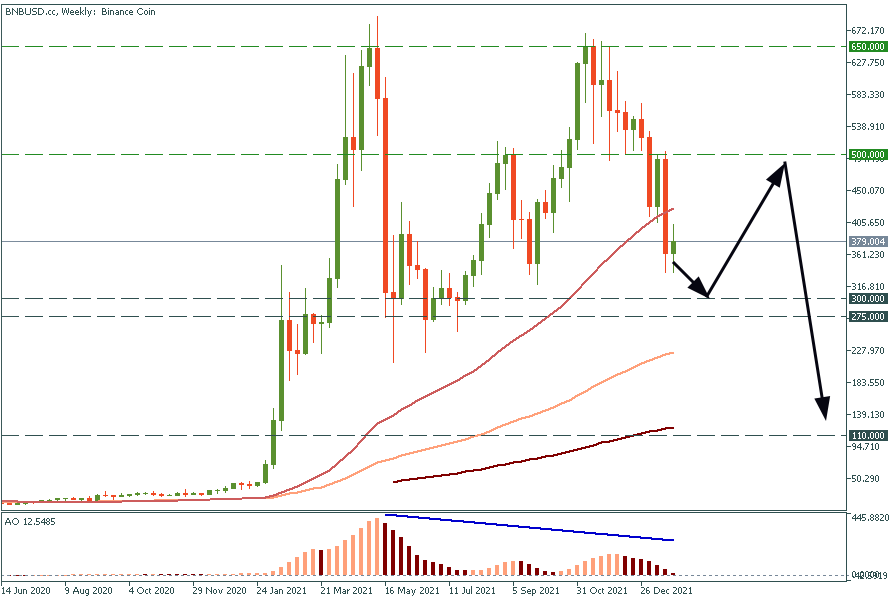
Binance coin can decline to the $275-300 support range. After that, the price might rise as high as $500. As well as Ethereum, BNB/USD might form a head-with-shoulder pattern and drop down to $110 afterward.
The immediate future of the crypto market looks rather gloomy. Fortunately, FBS traders can trade both sides, long and short, and earn the same on bull and bear markets.

Bank of Indonesia Governor Perry Warjiyo announced that Jakarta is following the lead of the BRICS bloc to reduce dependence on the USD and diversify the use of currency in international trade. Indonesia is "more concrete" than the BRICS...
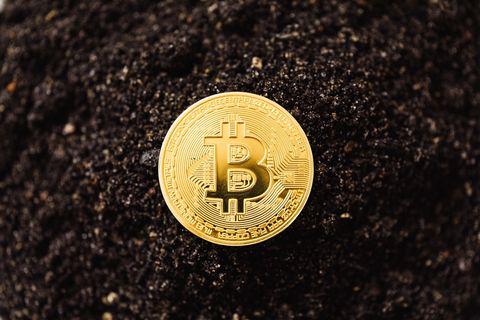
Hold on to your seats, folks! Bitcoin (BTC) is back with a vengeance, soaring past the $30 000 mark on April 11th, reaching its highest point since June 2022. And it's not just BTC - Ethereum (ETH) is also making gains, trading at $1917 and bagging 3.1% gains...
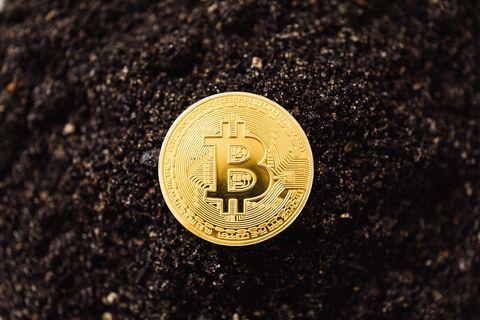
Hey, have you heard about the latest news on de-dollarization? It's the process of shifting away from the US Dollar (USD) as the world's reserve currency for trading...

eurusd-is-falling-what-to-expect-from-the-future-price-movement

Greetings, fellow forex traders! Exciting news for those with an eye on the Australian market - the upcoming interest rate decision could be good news for Aussies looking to refinance or take out new loans. The Mortgage and Finance Association Australia CEO, Anja Pannek, has...

Hold onto your hats, folks! The Japanese yen took a nosedive after the Bank of Japan (BOJ) left its ultra-loose policy settings unchanged, including its closely watched yield curve control (YCC) policy. But wait, there's more! The BOJ also removed its forward guidance, which had previously pledged to keep interest rates at current or lower levels. So, what's the scoop? Market expectations had been subdued going into the meeting, but some were still hoping for tweaks to the forward guidance to prepare for an eventual exit from the bank's massive stimulus
Your request is accepted.
We will call you at the time interval that you chose
Next callback request for this phone number will be available in 00:30:00
If you have an urgent issue please contact us via
Live chat
Internal error. Please try again later